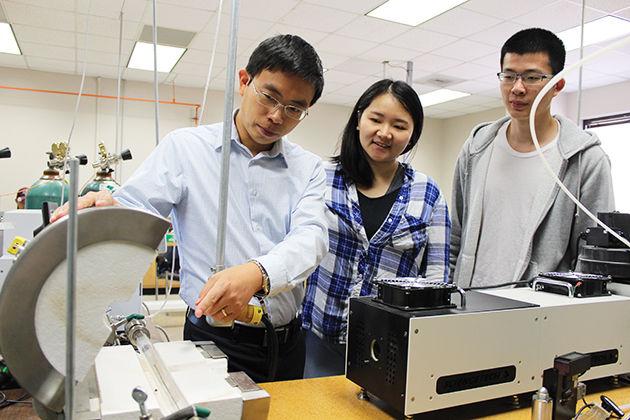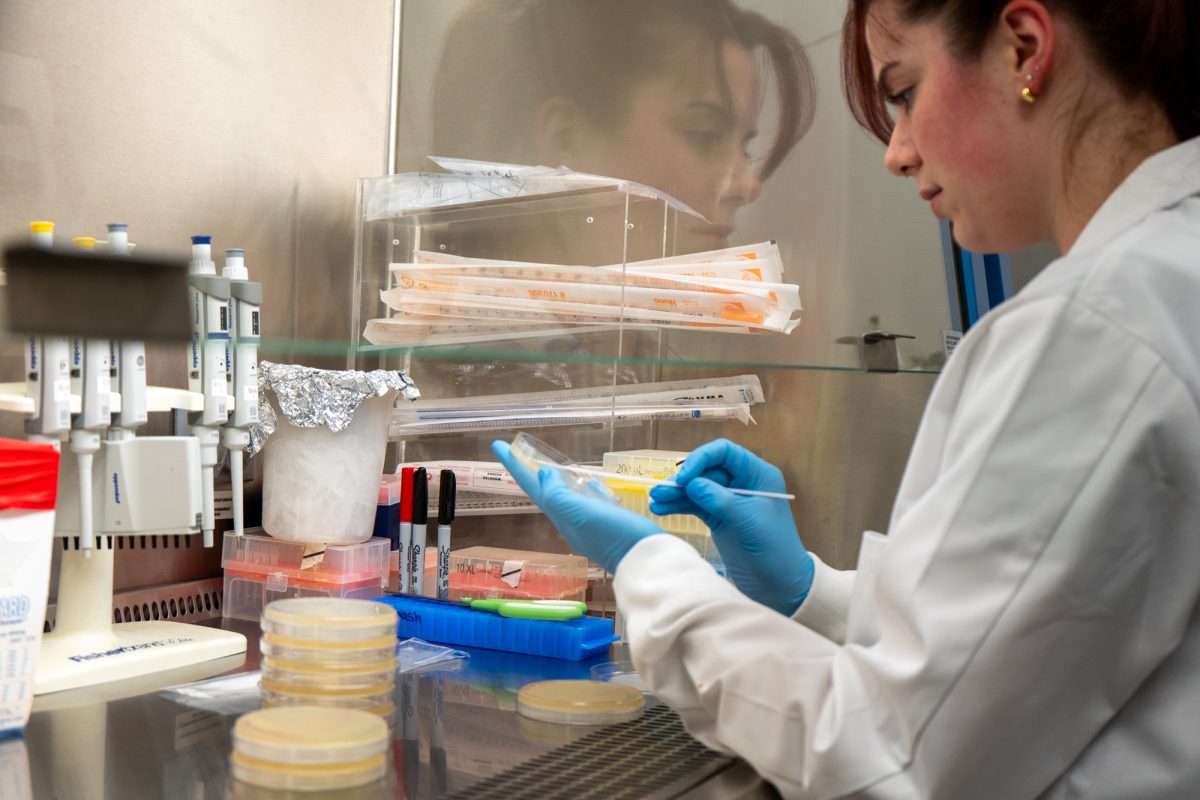A solar lab concentrator, a solar reactor and a group of dedicated researchers — herein lies a possible solution for the future of the environment: Converting carbon dioxide to usable solar fuel.
Associate professor Ying Li, who works in the mechanical engineering department, has been developing a way to turn pollutant greenhouse gases into energy using photocatalyst materials. The simulated process used to create the fuel — called artificial photosynthesis — works similarly to the environmental process in which plants absorb water in the soil and CO2 from the air.
“CO2 is a greenhouse gas,” Li said. “Rather than let it just be emitted, what I want to do is convert CO2 to hydrocarbon fuels like methane.”
While the process occurs naturally in the environment, simulating it in the lab requires researchers to use photocatalyst materials, which will serve as conductors to simulate the natural process, Li said.
“Photocatalysts, like titanium dioxide, are semiconductors so they can absorb sunlight or photons,” Li said. “The photon will excite the electrons to a higher energy level. These electrons can initiate chemical reactions to react to CO2 or to reduce CO2.”
This entire engineered process remains very close to the natural process itself, Li said. Similar to the use of solar panels, this form of energy could be used in a variety of ways — specifically as liquid fuel.
“The reason we are interested in fuel is because electricity is hard to store,” Li said. “We need a battery to store electricity. Battery technology is not so developed that we can store this gigantic amount of electricity.”
Li is also trying to find a solution to the issue that arises after the sun sets, since solar energy cannot be effectively produced at night or on cloudy days. Mechanical engineering Ph.D. candidate Huilei Zhao has been researching with Li since he recruited her during her undergrad at the University of Milwaukee in 2011.
“I started doing research under [Li’s] supervision,” Zhao said. “I’m very interested in the catalyst and the environmental issue, how to solve the problem. I think everyone should care [about this problem].”
Various kinds of energy research are important to help solve environmental issues affecting the Earth, said Debjyoti Banerjee of the Department of Mechanical Engineering, who works in the field of thermodynamics.
“One way to think about it is like in the stock market,” Banerjee said. “You don’t want to invest all of your stock in one company, you want to diversify. So from that point of view you don’t want to invest all of your resources in only one type of energy.”
Navin Kumar, mechanical engineering Ph.D. candidate, said although there are varying opinions about what forms of energy are most reliable, he believes renewable energy will be at the forefront within the next two decades, which is why Li’s research is important.
“It depends on what side you are on,” Kumar said. “If you take it on the green energy side, there are a lot of possibilities. The sun is the biggest source, but a lot of work needs to be done. If you take burning fuel, it’s a proven method but you have to worry about global warming. Both sides have benefits and effects. I believe in the next 10 to 15 years we will be relying on renewable energy.”
The work of researchers like Li, Banerjee and their students is driven by a collective desire to help the environment, according to Zhao.
“Our living environment is very important,” Zhao said. “If you think that there is a lot of carbon dioxide and global warming … Everyone should pay attention to that and work on that maybe from different aspects.”








